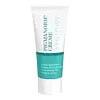What's inside
What's inside
 Key Ingredients
Key Ingredients

 Benefits
Benefits

 Concerns
Concerns

 Ingredients Side-by-side
Ingredients Side-by-side

Hydroquinone 5%
StabilisingTretinoin 0.03%
Skin ConditioningDexamethasone 0.03%
Propylene Glycol 0.3%
HumectantCetyl Alcohol
EmollientMethyl 2,4-Dihydroxybenzoate
Skin ConditioningPropylparaben
PreservativeBHA
AntioxidantBHT
AntioxidantPEG-40 Glyceryl Stearate
EmulsifyingSodium Cetearyl Sulfate
CleansingParaffin
PerfumingIsopropyl Myristate
EmollientPetrolatum
EmollientEthylhexyl Methoxycinnamate
UV AbsorberButyl Methoxydibenzoylmethane
UV AbsorberPanthenol
Skin ConditioningAlcohol Denat.
AntimicrobialCamphor
MaskingTitanium Dioxide
Cosmetic ColorantSorbitol 70%
HumectantTocopheryl Acetate
AntioxidantCitric Acid
BufferingAscorbic Acid
AntioxidantLactic Acid
BufferingDisodium EDTA
Water
Skin ConditioningHydroquinone 5%, Tretinoin 0.03%, Dexamethasone 0.03%, Propylene Glycol 0.3%, Cetyl Alcohol, Methyl 2,4-Dihydroxybenzoate, Propylparaben, BHA, BHT, PEG-40 Glyceryl Stearate, Sodium Cetearyl Sulfate, Paraffin, Isopropyl Myristate, Petrolatum, Ethylhexyl Methoxycinnamate, Butyl Methoxydibenzoylmethane, Panthenol, Alcohol Denat., Camphor, Titanium Dioxide, Sorbitol 70%, Tocopheryl Acetate, Citric Acid, Ascorbic Acid, Lactic Acid, Disodium EDTA, Water
Aloe Barbadensis Leaf Extract
EmollientPropanediol
SolventArbutin
AntioxidantNiacinamide
Smoothing1,2-Hexanediol
Skin ConditioningHydroquinone
StabilisingCitric Acid
BufferingSodium Citrate
BufferingSodium Hyaluronate
HumectantSalicylic Acid
MaskingKojic Acid
AntioxidantLactic Acid
BufferingHamamelis Virginiana Leaf Extract
Skin ConditioningRosmarinus Officinalis Extract
AntimicrobialEucalyptus Globulus Leaf
Skin ConditioningThymus Vulgaris Extract
PerfumingAspalathus Linearis Extract
Skin ConditioningDisodium EDTA
Aloe Barbadensis Leaf Extract, Propanediol, Arbutin, Niacinamide, 1,2-Hexanediol, Hydroquinone, Citric Acid, Sodium Citrate, Sodium Hyaluronate, Salicylic Acid, Kojic Acid, Lactic Acid, Hamamelis Virginiana Leaf Extract, Rosmarinus Officinalis Extract, Eucalyptus Globulus Leaf, Thymus Vulgaris Extract, Aspalathus Linearis Extract, Disodium EDTA
 Reviews
Reviews

Alternatives
Ingredients Explained
These ingredients are found in both products.
Ingredients higher up in an ingredient list are typically present in a larger amount.
Citric Acid is an alpha hydroxy acid (AHA) naturally found in citrus fruits like oranges, lemons, and limes.
Like other AHAs, citric acid can exfoliate skin by breaking down the bonds that hold dead skin cells together. This helps reveal smoother and brighter skin underneath.
However, this exfoliating effect only happens at high concentrations (20%) which can be hard to find in cosmetic products.
Due to this, citric acid is usually included in small amounts as a pH adjuster. This helps keep products slightly more acidic and compatible with skin's natural pH.
In skincare formulas, citric acid can:
While it can provide some skin benefits, research shows lactic acid and glycolic acid are generally more effective and less irritating exfoliants.
Most citric acid used in skincare today is made by fermenting sugars (usually from molasses). This synthetic version is identical to the natural citrus form but easier to stabilize and use in formulations.
Read more about some other popular AHA's here:
Learn more about Citric AcidDisodium EDTA plays a role in making products more stable by aiding other preservatives.
It is a chelating agent, meaning it neutralizes metal ions that may be found in a product.
Disodium EDTA is a salt of edetic acid and is found to be safe in cosmetic ingredients.
Learn more about Disodium EDTAHydroquinone is used to treat hyperpigmentation, acne scars, and age spots.
It works by decreasing the melanocytes in your skin. Melanocytes are cells that create melanin (the color pigment in skin).
Be sure to use this ingredient as prescribed by your doctor. Wearing sunscreen is also a must (you should be wearing sunscreen anyway!).
Most hydroquinone prescriptions are not to be used for longer than 3 months. Long term usage can cause ochronosis, or a condition in which the skin darkens more than before.
This ingredient is banned in the EU for being skin sensitizer. In the US, this ingredient is not allowed for over-the-counter sale.
However, it is still possible to get hydroquinone in the EU, US, Canada, Australia, and Japan from a doctor's prescription.
There is no known research backing this ingredient to be carcinogenic in humans.
Check out the European alternative to hydroquinone here.
Gentle reminder that all skin tones are beautiful!
Learn more about HydroquinoneLactic Acid is another well-loved alpha hydroxy acid (AHA). It is gentler than glycolic acid but still highly effective.
Its main role is to exfoliate the surface of the skin by loosening the “glue” that holds dead skin cells together. Shedding those old cells leads to smoother, softer, and more even-toned skin.
Because lactic acid molecules are larger than glycolic acid, they don’t penetrate as deeply. This means they’re less likely to sting or irritate, making it a great choice for beginners or those with sensitive skin.
Like glycolic acid, it can:
Lactic acid also acts as a humectant (like hyaluronic acid). It can draw water into the skin to improve hydration and also plays a role in the skin's natural moisturizing factor (NMF) in the form of sodium lactate.
Studies show it can boost ceramide production to strengthen the skin barrier and even help balance the skin’s microbiome.
To get results, choose products with a pH between 3-4.
Lower strengths (5-12%) focus on surface exfoliation; higher strengths (12% and up) can reach deeper in the dermis (deeper, supportive layer) to improve skin texture and firmness over time.
Though it was originally derived from milk, most modern lactic acid used in skincare is vegan. It is made through non-dairy fermentation to create a bio-identical and stable form suitable for all formulations.
When lactic acid shows up near the end of an ingredient list, it usually means the brand added just a tiny amount to adjust the product’s pH.
Legend has it that Cleopatra used to bathe in sour milk to help reduce wrinkles.
Lactic acid is truly a gentle multitasker: it exfoliates, hydrates, strengthens, and brightens. It's a great ingredient for giving your skin a smooth, glowing, and healthy look without the harshness of stronger acids.
Read more about some other popular AHA's here:
Learn more about Lactic Acid